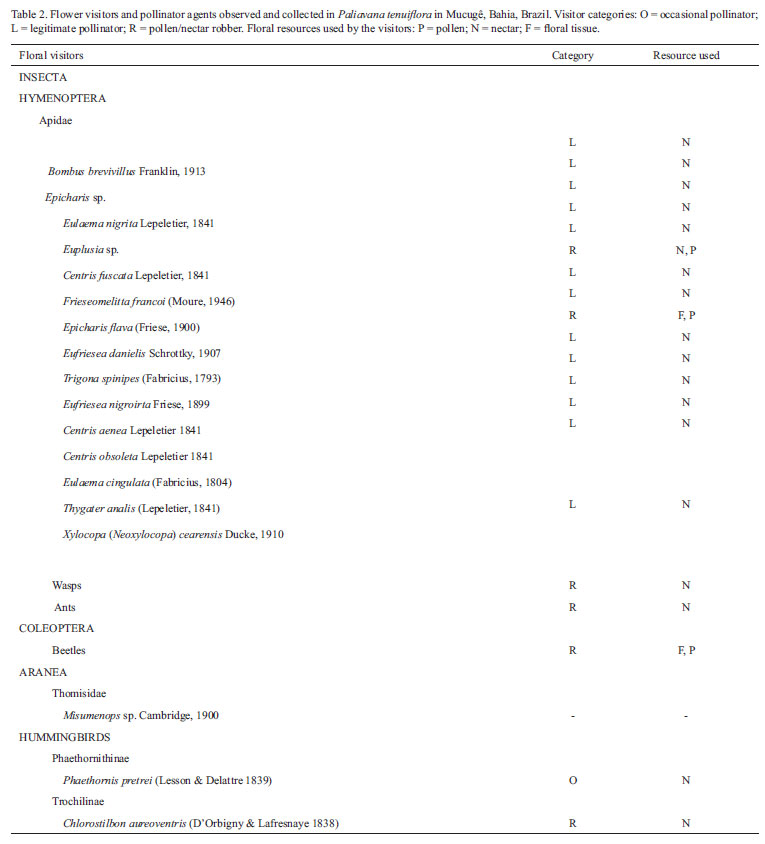In this study the floral biology, breeding system, visitors and pollinators of Paliavana tenuiflora were analyzed in campos rupestres in the Chapada Diamantina, Mucugê, Bahia, Brazil. Paliavana tenuiflora is a shrub with blue-violet, bell-shaped flowers, with anthesis at 11:00 h; the flowers last about six days. Large amounts of nectar are produced (volume average 15.5µL, concentration 22.7% and sugar content 5.0 mg mL-1). The amount of nectar is not related to the time of day, but concentration varied with volume. The species is self-compatible, but fruit set depends on pollinators. Although nectar is available by day and night, flowers of P. tenuiflora fit the bee pollination syndrome, and are actually pollinated by Bombusbrevivillus. However, the hummingbird Phaethornis pretrei can be considered an occasional pollinator, due to its behavior and low frequency of visits. Our results suggest a mixed pollination system, although the importance of P.pretrei as a pollinator remains to be better evaluated.
campos rupestres; pollination; breeding system; Bombus brevivillus; Phaethornis pretrei; Bahia


